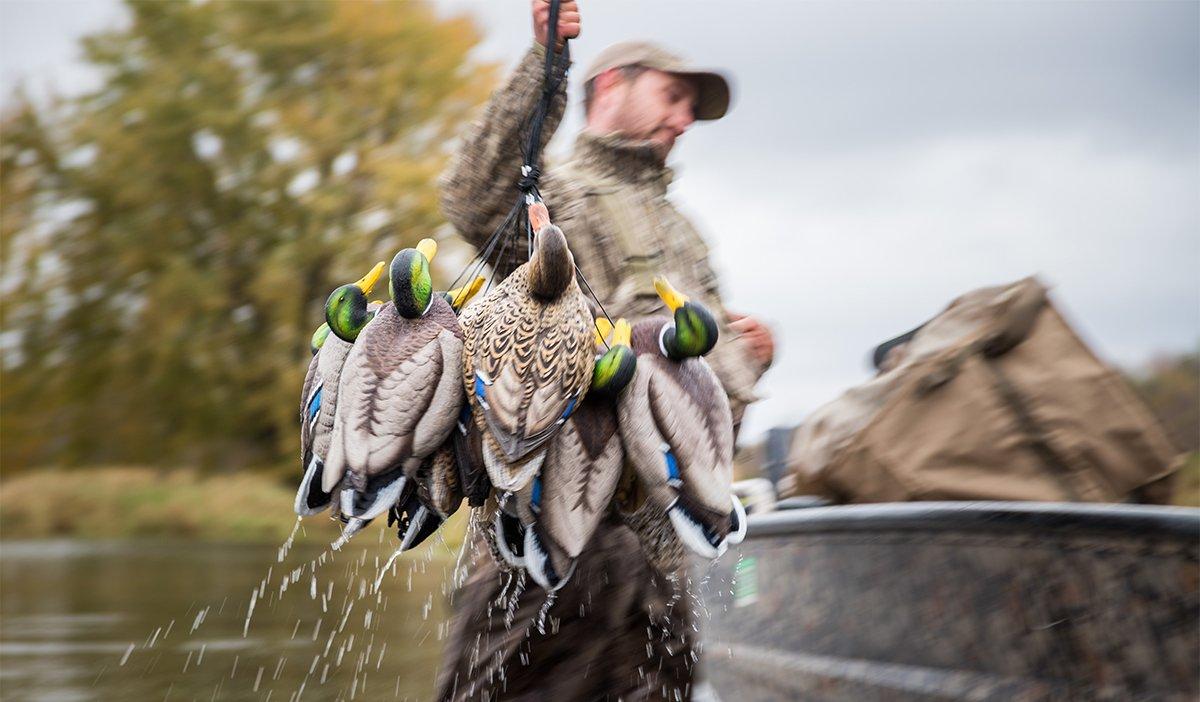With Stale Birds, Standard Spreads Won't Always Work
When you're on the X and times are good, decoys can become an afterthought. Throw a few over there. Toss a few upwind. Heck, make a J if you feel inspired.
During tougher times and when chasing educated birds, however, your fakes become more important. That stiff, motionless J you haphazardly tossed out on the opener might net you an empty boat and a puffy lip.
Tough scenarios and educated waterfowl call for specialized decoy tactics. And you'll only discover those approaches through observation, forethought and plenty of trial and error. Here are a few strategies to consider when birds get stale and your straps are light.
Thin 'Em Out
If you've watched ducks or geese on the water during relatively calm conditions, you know that they tend to spread out instead of bunching together (unless, of course, they're hitting a red-hot food source). Obviously, you should mimic that look.
When the wind dies, pick up a few decoys, and spread the remainder over a broader area. Don't set them out of range, of course, but merely loosen them up so they look like a group of lazy, content birds, not a stiff, unnatural grouping with parallel lines and J, V or C shapes.
This strategy might only net you fly-bys with stale birds, but at least ducks and geese won't flare at 70 yards because of a clumsy spread.
Stack 'Em Up
Conversely, huge setups make sense in some situations, such as big water, big fields, diver setups or any other scenario in which loads of birds might congregate. Not killing many 'bills with your standard 75-decoy setup? Add a few more dozen, but just make sure the spread moves and still looks natural. Having trouble finishing geese with 60 full-bodies? Add silhouettes on the edges and some socks behind your blinds for depth, and then stack the full-bodies around you for maximum concealment. Sometimes, numbers talk.
The (Non) Shape of Things
As a diver nut, I know all about configuring spreads to dictate duck behavior. Set your blockers here. Throw your tail there. Leave a hole right there. It's smart strategy — sometimes. As mentioned, stale or educated birds learn to pick out phony setups and typically avoid them. And why not, when rafts of their brethren look little like our long-line sets or J-hooks?
When hunting gets tough, observe birds in your area, and try to replicate that look with your blocks. When puddlers stack up against a leeward shoreline or even loaf on shore, place your decoys the same way. If divers stretch in a long, loose group near a celery bed, that's what your setup should imitate. You get the idea. Recognize how birds congregate on the water or land, and re-create that scene with your fakes. Realism always helps.
Pick 'Em Up
Hunt with no decoys? I've done it. In some high-pressure situations, birds care more about finding secluded spots to loaf or feed than associating with other waterfowl. Great examples include hard-hunted ducks in cattail-choked marshes or geese that loaf at small water holes. Sometimes, decoys can even dissuade birds from using these areas.
It takes lots of guts for a waterfowler to hunt without decoys. However, in some situations, it's the right call. Recognize when birds want to use a spot but seem put off by your spread. Pull the fakes and see what happens. You might be surprised.
Bottom Decoy Line
Whatever the situation, don't get locked into a standardized decoy approach. Watch ducks and geese, and note how they react to various setups. Then, adapt your look. Maybe it won't work, but that's OK, as you'll gain a nugget of knowledge for future hunts. When it does work, keep it a secret, as you might be the only person in the marsh who's found a decoy strategy even hard-hunted ducks and geese can't resist.
Click here for more Realtree waterfowl hunting content. And check us out on Facebook.







